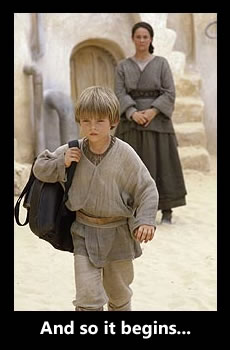 It’s Monday, October 20th, which means that it’s Day 1 of my new job at Microsoft. Of course, if you’re a mathematician or a programmer — or Harry Belafonte — you might be inclined to call it Day 0. If you’re thinking in terms of old-school, pre-.Net Visual Basic, you can go with either Day 0 or Day 1, depending on the circumstances.
It’s Monday, October 20th, which means that it’s Day 1 of my new job at Microsoft. Of course, if you’re a mathematician or a programmer — or Harry Belafonte — you might be inclined to call it Day 0. If you’re thinking in terms of old-school, pre-.Net Visual Basic, you can go with either Day 0 or Day 1, depending on the circumstances.
Developer Advisor
My business card, when it comes, will read “Joey deVilla, Developer Advisor“. Despite the fact that the group to which I belong is called Developer and Platform Evangelism (DPE for short), Microsoft Canada prefers advisor to evangelist. The word “Evangelist” is seen as coming with some particularly unpleasant baggage: a certain inflexible, intolerant, dickish, “yes, we’re doing bad things, but it’s for the greater good!” kind of attitude. Hence “advisor”, a kinder, gentler, more Canadian term.
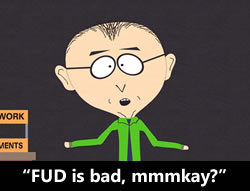 While I understand the rationale behind “advisor”, I’m having a little trouble getting behind it. The word doesn’t have the same gusto that “evangelist” does. To my mind, “Developer Advisor” has the same ring as “Gudiance Counselor”. The title makes me feel as if I should be wearing an ugly tie, end my sentences with “Mmmmmkay?” and say things like “Have you thought about what programming tools you’d like to be using next year?” and that most famous of guidance counselor lines, “Remember, my door is always open.”
While I understand the rationale behind “advisor”, I’m having a little trouble getting behind it. The word doesn’t have the same gusto that “evangelist” does. To my mind, “Developer Advisor” has the same ring as “Gudiance Counselor”. The title makes me feel as if I should be wearing an ugly tie, end my sentences with “Mmmmmkay?” and say things like “Have you thought about what programming tools you’d like to be using next year?” and that most famous of guidance counselor lines, “Remember, my door is always open.”
There’s also the fact that “technical evangelist” or “developer evangelist” is already a term in common use in the industry. There are also a number of people in who’ve brought great honour to the title through their actions: people like Mike Boich, Guy Kawasaki, Robert Scoble, Geoffrey “Crossing the Chasm” Moore, Don Box, Alex St. John and David Intersimone.
(I have to give David Intersimone special mention because he had the most Sisyphean of evangelism tasks: evangelizing Borland’s — then CodeGear’s, now Embarcadero Technologies’ — perenially under-appreciated tools. I was once cold-called by Borland HR back in 2002 to become an evangelist for them; I didn’t have the heart to say “I think you guys are screwed without Anders, and I’m not sure you guys could market immortality.”)
You’ll probably find me using “evangelist” when referring to my position in casual conversation unless the boss is around. Maybe even then, as he’s a pretty cool guy.
What I’ll Be Doing
As a Microsoft Developer Evan– er, I mean Advisor — let me tell you what my job is not about first. My job is not about selling Microsoft developer tools. My hope is that you’ll eventually buy some Microsoft developer tools, of course, but when it comes times for the annual review, my work is not tied to the number of units moved or market share.
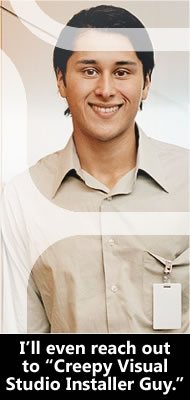 What my job is about is getting programmers excited about programming using Microsoft’s technologies. It doesn’t matter to me whether you’re a True Believer who develops on Windows using Visual Studio, SQL Server and SharePoint with a Microsoft keyboard and mouse in a little shrine to Bill Gates or if the most you’ll ever venture towards the Dark Side is to use Internet Explorer for user experience testing. It also doesn’t matter whether you eat, sleep and breathe computer programming and know your monads from your closures or if you refuse to think about programming after five p.m.. As long as you’re doing development and there’s a chance that a Microsoft developer tool might be what you need, you’re one of the people I’m reaching out to.
What my job is about is getting programmers excited about programming using Microsoft’s technologies. It doesn’t matter to me whether you’re a True Believer who develops on Windows using Visual Studio, SQL Server and SharePoint with a Microsoft keyboard and mouse in a little shrine to Bill Gates or if the most you’ll ever venture towards the Dark Side is to use Internet Explorer for user experience testing. It also doesn’t matter whether you eat, sleep and breathe computer programming and know your monads from your closures or if you refuse to think about programming after five p.m.. As long as you’re doing development and there’s a chance that a Microsoft developer tool might be what you need, you’re one of the people I’m reaching out to.
They’ll still be measuring my performance, but the metric they’ll be using is satisfaction rather than sales. If developers find value in my writing, presentations, demonstrations, tutorials, example code, meetups and accordion playing, then I’m doing my job right.
Drinking from the Firehose
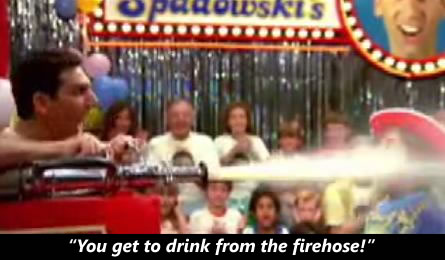
I’m told that freshly-recruited Microsofters (‘Softies? Microserfs? Ozzie’s Army?) spend the first few months feeling as though they’re drinking from a firehose. Microsoft’s Evan — er, Advisor — for western Canada, John Bristowe, has used the term in conversation, and Program Manager Phil “Haacked” Haack used it in a blog entry during his first days at the company. Microsoft has cranked out a lot of technology in the thirty-odd years since Bill Gates was schlepping around in a blue van with his BASIC interpreter on paper tape.
I’ve already started to immerse myself in Microsoft developer stuff. I’ve already been issued my “developer” laptop, the first of two (two!) that are standard issue for Developer Evan — er, Advisors. It’s a Dell Precision M6300 with a Core Duo T7800 running at 2.6GHz and with 4 gigs of RAM. It’s loaded with the “Big Daddy” editions of Windows and developer tools and is meant for me to run demonstrations, write tutorials and build applications to inspire other developers. It’s a hefty, solid laptop; the only more solid-feeling laptop I’ve ever held is my deadbeat ex-housemate’s old Sparctop, which handily doubles as a bludgeon.
The next couple of weeks are going to be interesting for me, as I’ll be:
- Poring over books and hacking out example code in my efforts to get up to speed with Microsoft’s development tools, which I haven’t used in a good long time
- Going through whatever orientation process Microsoft Canada has, which may or may not involved getting Borg implants installed
- Attending PDC2008, the conference where Microsoft’s tech kahunas will be introducing new tech and announcing the company’s technological direction for the next little while
- Enjoying working with old friends already at the company, such as David Crow and John Bristowe
- Getting to know my new co-workers, who are a pretty cool and very smart bunch
Let Me be Your Sexy Tour Guide
 (If it makes you feel more comfortable, I can just be your plain old tour guide.)
(If it makes you feel more comfortable, I can just be your plain old tour guide.)
Although I have a lot of ground to cover in my self-immersion into Microsoft tech, I’m not doing my job if I’m not communicating. In my interviews, I said that it would be a terrible waste if this were to happen. They liked my suggestion to have me treat my first days with Microsoft as a journey and my blog entries (and yes, I’m getting paid to write Global Nerdy!) as a travelogue. Perhaps a better way to think of me is not as your sexy tour guide, but as the late great Steve Irwin, Crocodile Hunter.
(Maybe I can shoot some video at PDC2008 where I wear a pith helmet and try to pin down Steve Ballmer and rub his belly.)
A good chunk of this blog will cover my exploration of Microsoft and its developer goodies, both the serious and not-so-serious stuff. I’ll probably talk a lot of developer tools, but I’m equally likely to do a photo essay on the fridges full of free pop at Microsoft headquarters. My mission is to out-Scoble Scoble, who was probably Microsoft’s best-known and most prolific tech evangelist.
But it won’t be “all Microsoft, all the time”, either. There’s a big wide world of development beyond Microsoft’s borders — I should know; I came from that world, after all. Even if you never ever intend to use Microsoft development tools, I think you’ll still find articles and info in this blog that you’ll like and fine useful.
And so the journey begins. I hope you come along for the ride; I promise to make it fun.



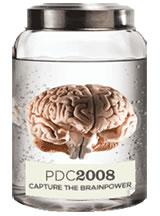



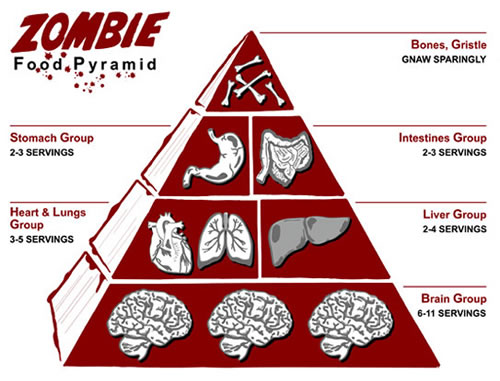

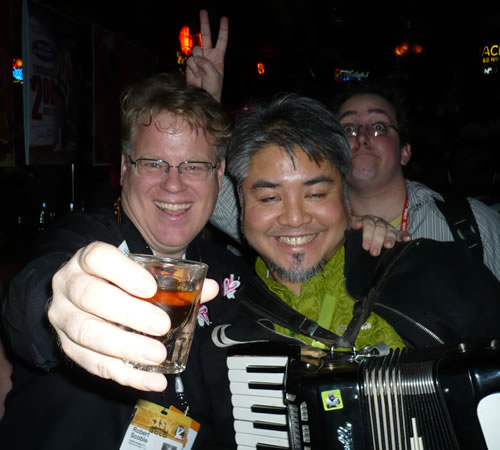


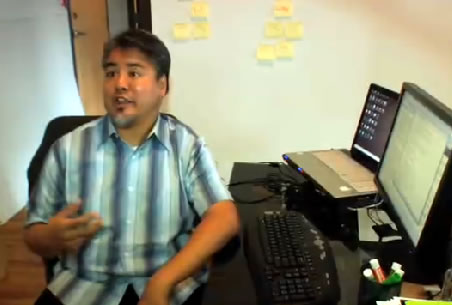
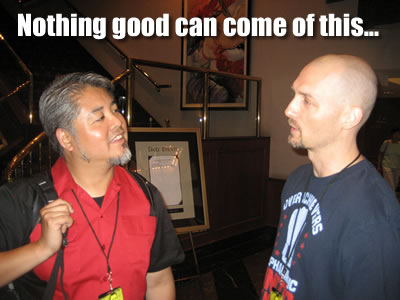



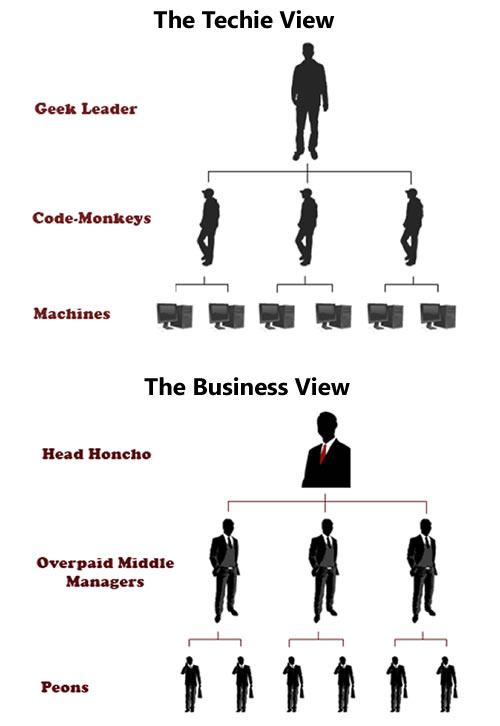

 It’s Monday, October 20th, which means that it’s Day 1 of my new job at Microsoft. Of course, if you’re a mathematician or a programmer — or
It’s Monday, October 20th, which means that it’s Day 1 of my new job at Microsoft. Of course, if you’re a mathematician or a programmer — or  While I understand the rationale behind “advisor”, I’m having a little trouble getting behind it. The word doesn’t have the same gusto that “evangelist” does. To my mind, “Developer Advisor” has the same ring as “Gudiance Counselor”. The title makes me feel as if I should be wearing an ugly tie, end my sentences with “Mmmmmkay?” and say things like “Have you thought about what programming tools you’d like to be using next year?” and that most famous of guidance counselor lines, “Remember, my door is always open.”
While I understand the rationale behind “advisor”, I’m having a little trouble getting behind it. The word doesn’t have the same gusto that “evangelist” does. To my mind, “Developer Advisor” has the same ring as “Gudiance Counselor”. The title makes me feel as if I should be wearing an ugly tie, end my sentences with “Mmmmmkay?” and say things like “Have you thought about what programming tools you’d like to be using next year?” and that most famous of guidance counselor lines, “Remember, my door is always open.” What my job is about is getting programmers excited about programming using Microsoft’s technologies. It doesn’t matter to me whether you’re a True Believer who develops on Windows using Visual Studio, SQL Server and SharePoint with a Microsoft keyboard and mouse in a little shrine to Bill Gates or if the most you’ll ever venture towards the Dark Side is to use Internet Explorer for user experience testing. It also doesn’t matter whether you eat, sleep and breathe computer programming and know your monads from your closures or if you refuse to think about programming after five p.m.. As long as you’re doing development and there’s a chance that a Microsoft developer tool might be what you need, you’re one of the people I’m reaching out to.
What my job is about is getting programmers excited about programming using Microsoft’s technologies. It doesn’t matter to me whether you’re a True Believer who develops on Windows using Visual Studio, SQL Server and SharePoint with a Microsoft keyboard and mouse in a little shrine to Bill Gates or if the most you’ll ever venture towards the Dark Side is to use Internet Explorer for user experience testing. It also doesn’t matter whether you eat, sleep and breathe computer programming and know your monads from your closures or if you refuse to think about programming after five p.m.. As long as you’re doing development and there’s a chance that a Microsoft developer tool might be what you need, you’re one of the people I’m reaching out to.
 (If it makes you feel more comfortable, I can just be your plain old tour guide.)
(If it makes you feel more comfortable, I can just be your plain old tour guide.)
 Among the things that I expect to see announced and/or covered at PDC2008 are:
Among the things that I expect to see announced and/or covered at PDC2008 are: